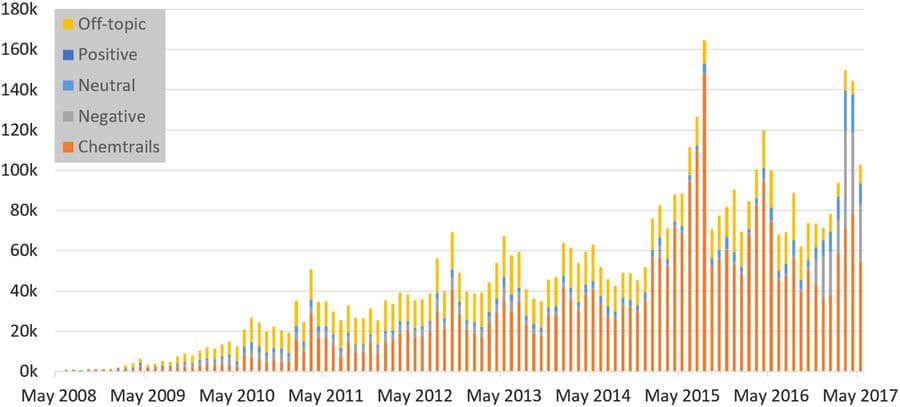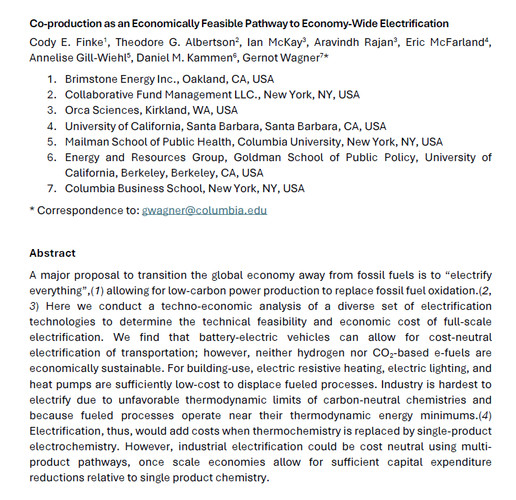Solar Geoengineering and the Chemtrails Conspiracy on Social Media
by Dustin Tingley and Gernot Wagner

Monthly geoengineering monitor categories on Twitter, Facebook and other social media platforms, May 2008–17, using Crimson Hexagon’s supervised learning methods (Hopkins and King, 2010) to categorize social media discourse as “chemtrails” (61% of total), ”negative” (8%), “neutral” science reporting (6%), “positive” (<1%), and off-topic (25%).
Abstract:
Discourse on social media of solar geoengineering has been rapidly increasing over the past decade, in line with increased attention by the scientific community and low but increasing awareness among the general public. The topic has also found increased attention online. But unlike scientific discourse, a majority of online discussion focuses on the so-called chemtrails conspiracy theory, the widely debunked idea that airplanes are spraying a toxic mix of chemicals through contrails, with supposed goals ranging from weather to mind control. This paper presents the results of a nationally representative 1000-subject poll part of the 36,000-subject 2016 Cooperative Congressional Election Study (CCES), and an analysis of the universe of social media mentions of geoengineering. The former shows ~ 10% of Americans declaring the chemtrails conspiracy as “completely” and a further ~ 20–30% as “somewhat” true, with no apparent difference by party affiliation or strength of partisanship. Conspiratorial views have accounted for ~ 60% of geoengineering discourse on social media over the past decade. Of that, Twitter has accounted for >90%, compared to ~ 75% of total geoengineering mentions. Further affinity analysis reveals a broad online community of conspiracy. Anonymity of social media appears to help its spread, so does the general ease of spreading unverified or outright false information. Online behavior has important real-world reverberations, with implications for climate science communication and policy.
Full text: “Solar Geoengineering and the Chemtrails Conspiracy on Social Media”


